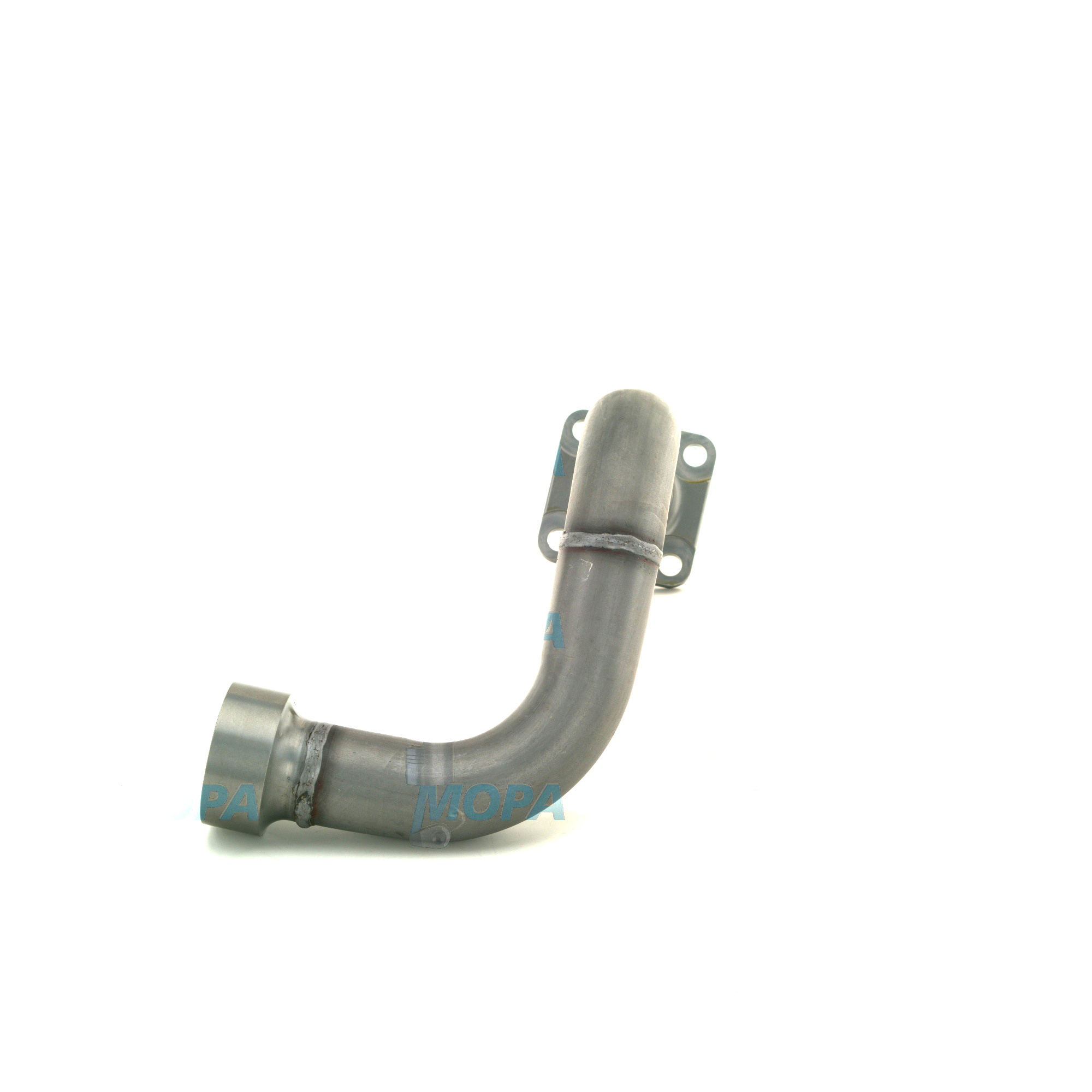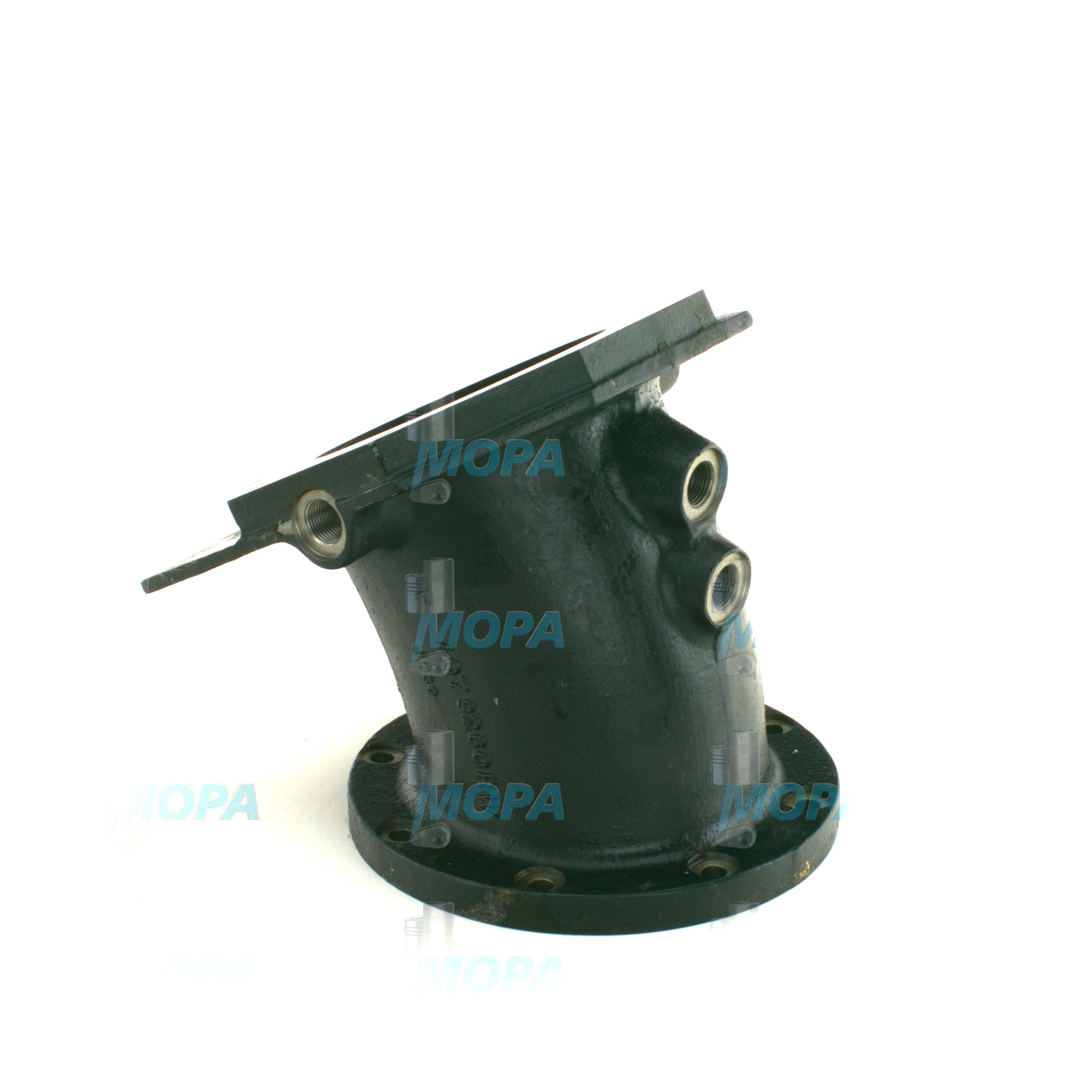ELBOW Compensators and manifolds
Compensators and manifolds form the backbone of gas-path management in heavy-duty engines. In intake systems, manifolds distribute clean charge air evenly to each cylinder; in exhaust systems, they collect and route hot gases to the turbocharger and aftertreatment. Integrated bends and ELBOW sections define the flow path, while compensators (metal bellows and flexible elements) absorb thermal expansion and vibration. Together, these assemblies protect critical components, stabilize performance, and keep engines running safely and efficiently in marine, power generation, and industrial environments.
Whether installed on a high-speed generator set or a two-stroke marine engine, precisely engineered manifolds and compensators ensure optimal backpressure, balanced cylinder loading, and leak-free operation. ELBOW geometry, flange design, and compensator placement are not cosmetic details—they directly influence turbocharger efficiency, fuel economy, emissions, and the long-term integrity of the engine block and auxiliaries.
Technical function of ELBOW compensators and manifolds in diesel engine and marine engine applications
Exhaust manifolds collect combustion gases from each cylinder and deliver them to the turbine inlet. The internal surface, runner length, and ELBOW radius control flow velocity, pressure pulses, and heat transfer. In a diesel engine, smooth-radius ELBOW sections minimize pressure loss and pulsation interference, helping the turbocharger maintain stable boost while reducing thermal stress on valves and seats. In marine engine installations, wet ELBOW sections may also mix cooling water downstream of the manifold to limit temperatures in the exhaust line—demanding corrosion-resistant materials and precise drainage design.
Compensators are engineered expansion joints placed at strategic points—often near an ELBOW or between manifold modules—to decouple thermal growth, angular misalignment, and hull-induced vibration in vessels. Their bellows profile and ply count determine axial, lateral, and angular movement capacity. Correctly sized compensators prevent flange warping, gasket blowouts, and weld fatigue, while maintaining a tight seal under high temperature and cyclic loads. On the intake side, manifolds and ELBOW transitions maintain laminar flow to reduce charging losses, dampen pulsations, and improve transient response.
Specifying ELBOW OEM parts within manifolds and compensator assemblies ensures exact fit-up with mating flanges, consistent wall thickness at the bend, and verified metallurgy—critical for withstanding high-temperature oxidation and chloride-rich atmospheres in engine rooms.
- · High-temperature alloys and proven weld procedures.
- · Flow-optimized ELBOW radii to reduce backpressure.
- · Compensators sized for axial, lateral, and angular movement.
- · Gas-tight sealing at flanges and expansion joints.
- · Corrosion-resistant materials for marine environments.
- · Geometry matched to turbocharger inlet for stable boost.
- · Vibration isolation that protects valves, turbo, and sensors.
- · Documentation and traceability for class-compliant operation.
Importance for engine operation and service life
Compensators and manifolds directly influence reliability, fuel consumption, and emissions. Excessive backpressure from undersized ELBOW bends or fouled runners increases exhaust temperature, elevates thermal loading on the turbocharger, and can degrade brake-specific fuel consumption. Leaks at manifolds or bellows introduce oxygen, risking afterburning and hot spots near cable trays or insulation—serious safety hazards on board.
When compensators are worn or improperly specified, thermal expansion transfers into rigid piping and cylinder heads, causing flange distortion, gasket failure, and cracks in weld toes. Uneven manifold flow can unbalance cylinder-to-cylinder scavenging, driving up vibration, NOx, and smoke. In extreme cases, turbocharger overspeed or surge may result from disturbed pulsation energy, risking costly unplanned downtime and off-hire. Routine condition monitoring—checking for soot tracks, hot insulation, and bellows convolution wear—helps maintain integrity, but the foundation is robust design and correct parts selection.
Advantages of OEM spare parts suitable for compensators and manifolds
For purchasers and superintendents, choosing OEM spare parts suitable for compensators and manifolds is a strategic decision that ties directly to lifecycle cost and operational uptime. These components are dimensionally aligned to engine maker tolerances, with bend radii, wall thickness, and convolution geometry validated for the intended duty cycle. Material certificates and controlled heat treatments protect against creep, corrosion, and low-cycle fatigue.
Fit accuracy shortens docking time, eliminates on-site rework, and reduces the risk of joint stress from forced alignment. Surface finishes and internal geometry match design intent, maintaining the calibrated gas dynamics your turbocharger mapping depends on. For ELBOW diesel engine and ELBOW marine engine configurations, OEM spare parts also ensure weld bevels, gasket grooves, and fastener lengths match the original specification, streamlining maintenance.
Key benefits of selecting OEM for ELBOW OEM parts, compensators, and manifolds:
- · Precise fit and flow geometry preserve performance.
- · Verified materials extend service life under heat and load.
- · Lower installation time and reduced rework risks.
- · Stable backpressure protects turbocharger and valves.
- · Predictable maintenance intervals support budgeting.
MOPA: fast, high-quality supply of OEM parts for ELBOW compensators and manifolds
MOPA is an experienced, reliable partner for OEM spare parts Compensators and manifolds. We combine technical expertise with rapid sourcing to keep diesel and gas engines on schedule. Our team cross-references part numbers, confirms specifications, and provides documentation that supports classification and safety management requirements. From a single ELBOW section to complete manifold modules with compensators, we deliver consistent quality with secure, traceable logistics.
Expect short lead times, careful packing for corrosion protection, and responsive support. MOPA’s focus on speed, quality, and security in the trade of OEM parts helps operators reduce downtime and maintain confidence in every installation—whether shore-based or at sea.
Conclusion: ELBOW-focused manifolds and compensators that protect performance
Compensators and manifolds—together with correctly engineered ELBOW sections—are critical to engine performance, safety, and longevity. Selecting OEM spare parts suitable for these assemblies preserves designed flow, limits thermal stress, and keeps maintenance predictable.
With MOPA as your partner, you gain fast, secure access to the OEM components that keep diesel and gas engines efficient, reliable, and ready for service.




